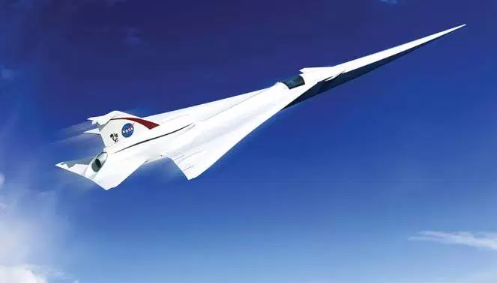NASA will evaluate this month's August manufacturers' offers to develop the aircraft that will decrease engine sound and reduce flight time.
An airplane that will decrease the sound of the engine and that will be able to travel distances in a reduced time. This is the goal of NASA with its supersonic aircraft, which will have a budget of 390 million dollars over the next five years. The United States Space Agency will begin to contemplate this month of August the different offers of the manufacturers for the construction of the first model. By 2022, NASA contemplates that the aircraft will already be tested in the United States. The first year of funding is included in Donald Trump's budget proposal for 2018.
NASA points to a very low sound level that could be bought with the noise of a luxury car on the road or the conversation of a busy restaurant. Specifically, the engine would reach about 60 decibels, 30 less than the legendary Concorde. The first design, made in collaboration with Lockheed Martin, would be 28 meters, would fly at a height of 16,764 meters and would have capacity for a pilot, Bloomberg explained.
The researchers said that the first model of the aircraft was tested in a wind tunnel in June, although it was a smaller scale design. The final prototype promises, as an example, to halve the six-hour flight on the way from New York to Los Angeles and meet one of the greatest expectations in the aviation industry: achieving high-speed aircraft.
NASA will share the technologies of stock makers like OEM, General Dynamics or Boeing, in addition to Boom, the expert company in supersonic aircraft since 2016.
In February of 2017, NASA obtained the contract that would allow him to develop the first model of supersonic airplane. Charles Bolden, the agency's administrator, said at the time that they are working hard "to make the flight greener, safer and more quiet, while developing faster-traveling planes and building a more efficient and efficient aviation system".
In addition to developing the technology, NASA faces other challenges such as regulation in the United States that typifies the maximum speed allowed on commercial flights, which can not be more than 1,060 kilometers per hour at 9,144 meters. NASA has not specified the maximum speed at which supersonic aircraft would travel, but would have to exceed the number in order to travel for half the time than a conventional aircraft and get approval from the United States Congress.
The project is part of the NASA New Aviation Horizons initiative, which aims to reduce aircraft fuel use, emissions and noise through innovations. The latest initiative was the development of the Aurora D8 Double Bubble subsonic aircraft to reduce flight costs without jeopardizing its efficiency.
